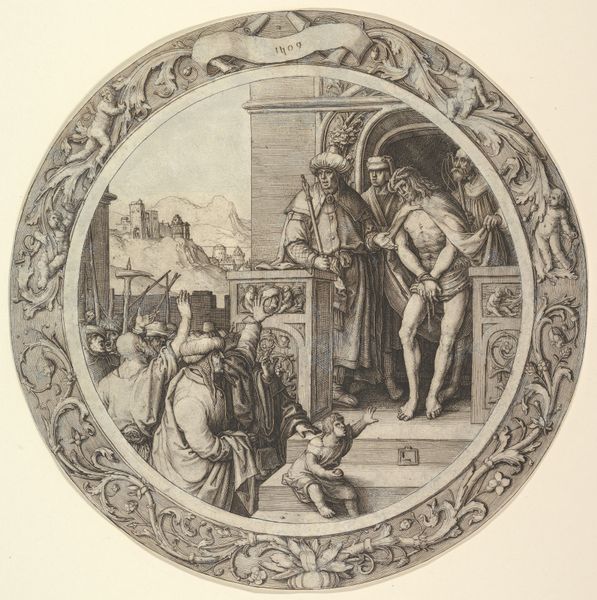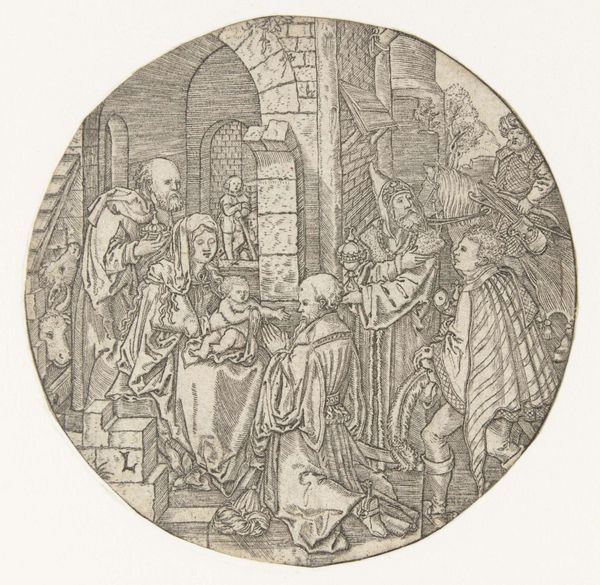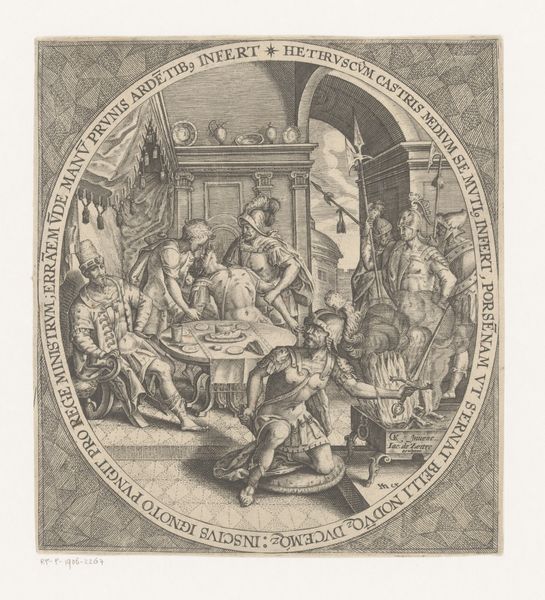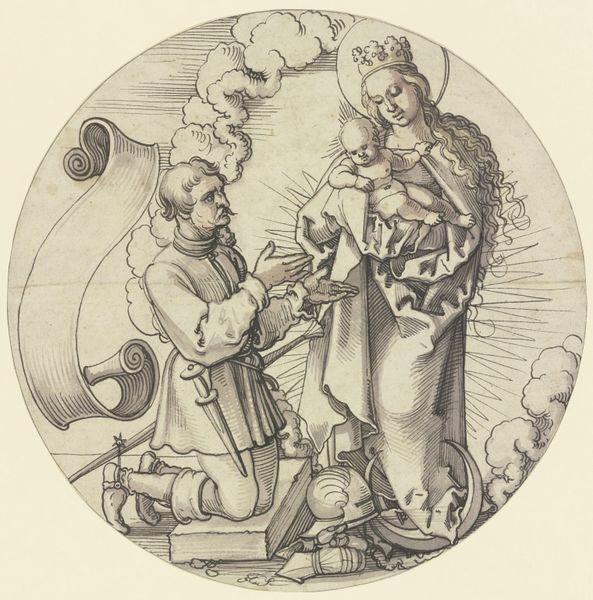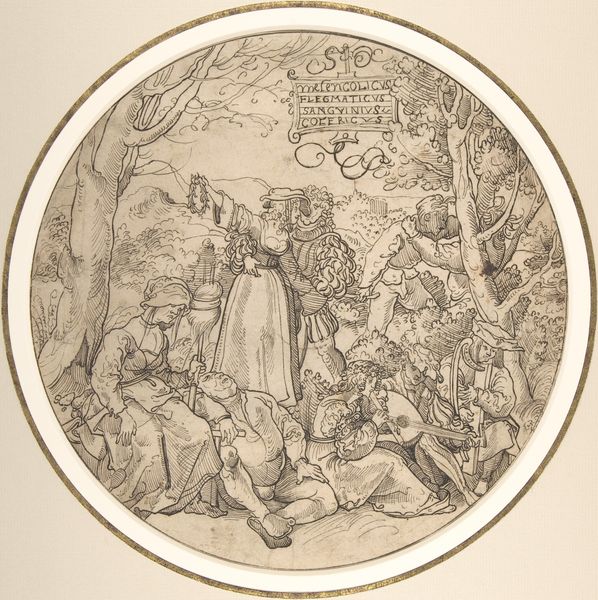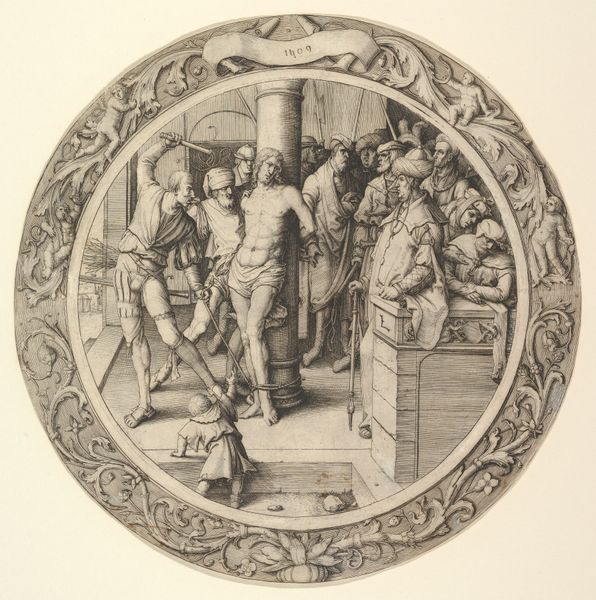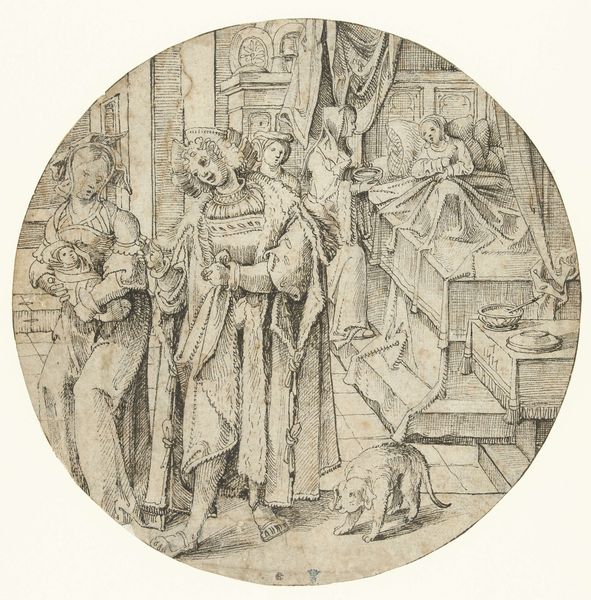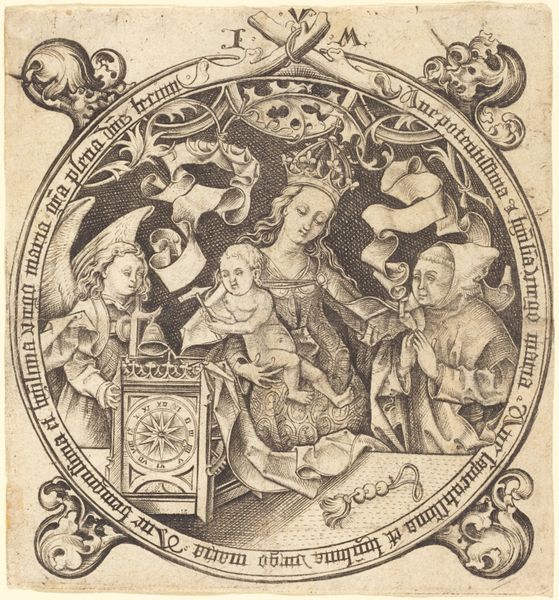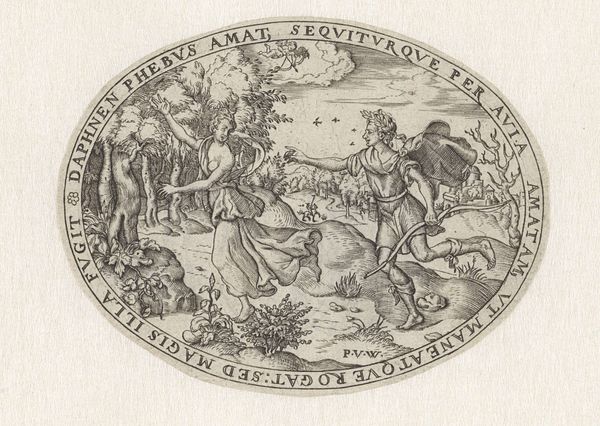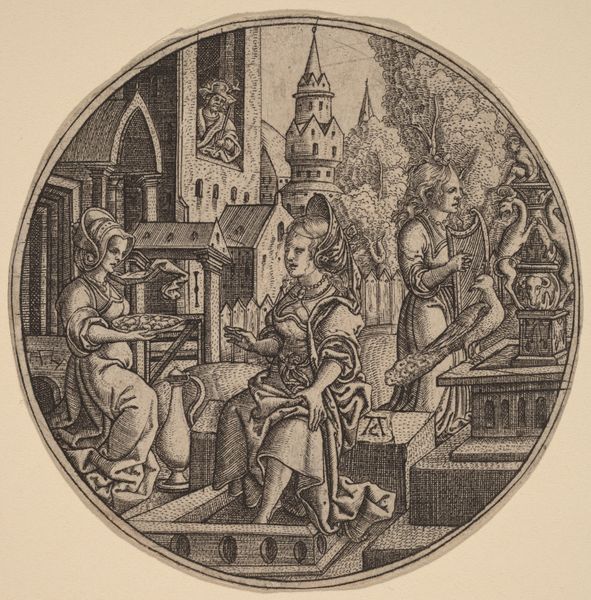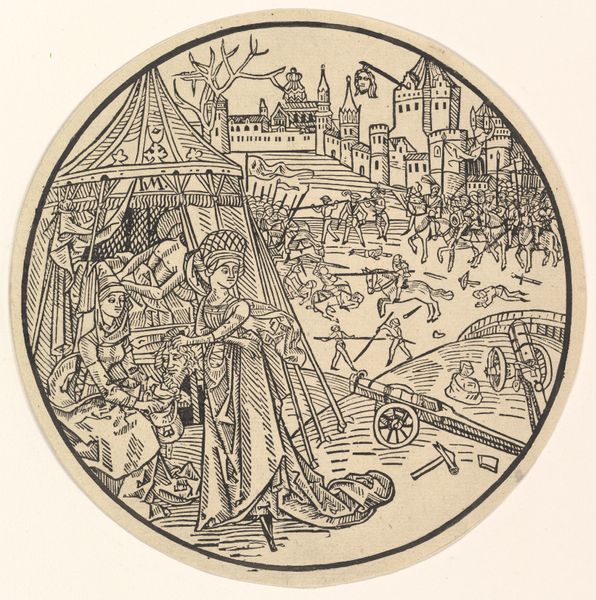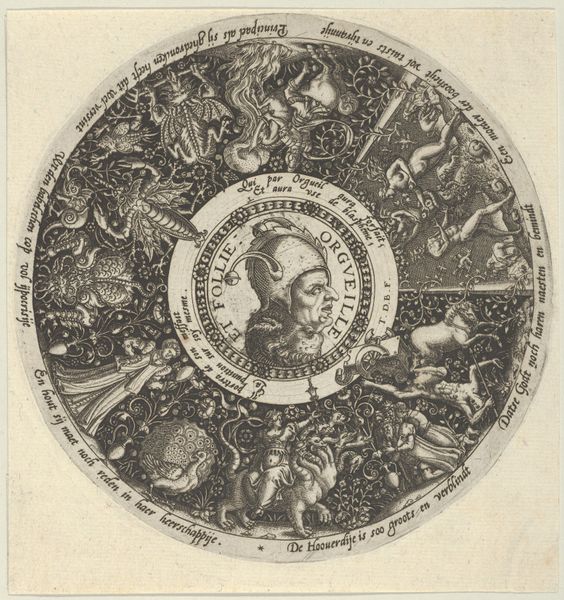
drawing, print, engraving
#
drawing
#
allegory
# print
#
figuration
#
11_renaissance
#
personal sketchbook
#
13_16th-century
#
history-painting
#
northern-renaissance
#
engraving
Copyright: Public Domain
Curator: Here we have "Ein Stifter vor Christus als Weltenrichter", attributed to Sebald Beham. This engraving from the Renaissance period currently resides in the Städel Museum. Editor: It’s incredibly detailed. I'm immediately struck by the contrast: a humble, kneeling figure and this glorious vision above. There's a certain tension. Curator: Indeed. Beham, known for his prints and drawings, was navigating a complex socio-political landscape. Consider the Reformation, the shifting power dynamics… it all played out in the art of the time. This piece likely served a very specific, and perhaps politically motivated, purpose. Editor: And there’s this very individualized figure. He’s presented kneeling on some stairs in contemporary clothing, not an idealized saint, really emphasizing humanity’s position and perhaps privilege within the social and political climate. He also has his coat of arms in there. Do you think the act of printing allowed for further distribution to disseminate that kind of ideology? Curator: Certainly, the printing press facilitated the rapid spread of ideas. The patronage system significantly influenced artistic production. Wealthy donors, the 'Stifter' as referenced in the title, could commission works that reflected their social standing and religious beliefs. This image becomes a testament to his piety but also a calculated statement of power. It places him in a direct relationship with the divine. Editor: That rings true. The image definitely becomes this assertion of social standing intertwined with spirituality, and that the individual gets to literally position themselves right beside God in some of these renderings is still startling to see. There’s also the lettering itself, a kind of encircling justification. Curator: Right, which encloses this sort of protective embrace that becomes an institutional way of life, really justifying that kind of political and economic authority in this Renaissance artwork. And Beham positions the composition within these power structures while engaging the viewers. The use of the medium allowed his artwork to move into new arenas, further underscoring its importance in contemporary European culture. Editor: I suppose it’s that very layering of identities, religion, social class and so on, that make these Renaissance artworks a gift to understanding the past in intersectional narratives. Curator: It is truly multi-layered! Thanks for this enlightening observation. Editor: Thank you! Analyzing these artworks, through their cultural landscape is such a joy.
Comments
No comments
Be the first to comment and join the conversation on the ultimate creative platform.
